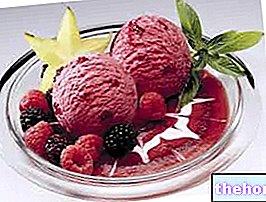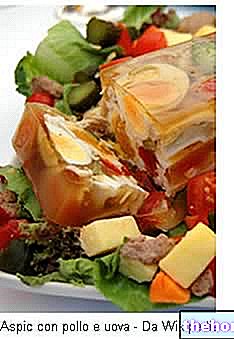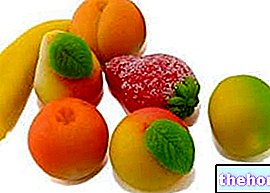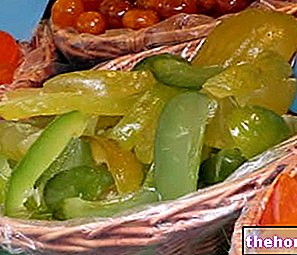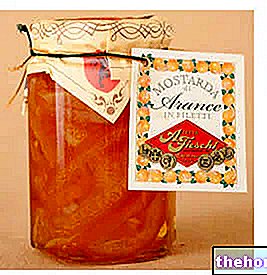Marshmallow: What is it?
Marshmallow (in English, “marshmallows” in the plural) is a sweet snack that can be placed among soft candies.

This type of marshmallow is the modern version of an older product, obtained from the medicinal plant Althaea officinalis, or rather called "marshmallow plant".
Homemade Marshmallows
Problems with playing the video? Reload the video from youtube.
- Go to the Video Page
- Go to the Video Recipes Section
- Watch the video on youtube
Marshmallow and Diet
As anticipated, the traditional recipe for marshmallows uses the powdered root of the "Althaea officinalis, which today is not so easy to find.
Currently, most contemporary marshmallows are based on animal gelatin (collagen obtained from rind and bones of animals, especially pork), which is why they are excluded from the vegetarian diet. Also, marshmallows are not considered food kosher (Jewish diet), nor halal (Muslim diet), unless the jelly they are made of comes from kosher or halal animals.
A valid alternative to animal gelatin, which brings together Jews, Muslims and vegans, is constituted by vegetable jellies such as "agar agar.
Marshmallow creams and other less dense products contain little or no gelatinizer, which mainly serves to maintain the shape of the candy. These products, on the other hand, exploit the chemical effect of albumen (albumin proteins), which is less powerful than the aforementioned additives. These non-gelatinized, collagen-free versions can be safely consumed by lacto-ovo vegetarians, Jews and Muslims, but not vegans and raw food eaters.

Nutritional values (per 100 g of edible portion)
Nutritional Characteristics
Marshmallows are sweet foods with a rather high energy intake. The calories come mainly from carbohydrates, which tend to be simple (sucrose) and to a lesser extent complex (starch).
Proteins and lipids are proportionally less relevant; the peptides are in any case of high biological value (from collagen) and the fatty acids mainly unsaturated.
Marshmallows do not contain cholesterol and dietary fiber.
From a salt and vitamin point of view, marshmallows do not contain nutrients in significant quantities.
These foods are not recommended in case of overweight, hyperglycemia or type 2 diabetes mellitus, and hypertriglyceridemia. We remind you that the high quantity of simple sugars can also be harmful for people predisposed to dental caries.
Marshmallows have no other contraindications and, being lactose and gluten free, they are allowed in the diet against related food intolerances.
The average portion of marshmallows, if used as a snack, and in any case occasionally, is about 30g (95kcal).
ATTENTION! Roasted marshmallows, which you can read about in the next paragraph, are foods potentially contaminated with toxic or carcinogenic compounds. These substances, including acrylamide, polycyclic aromatics, etc., are the result of the carbonization of sugars and proteins on fire.
Roast Marshmallow
Flame roasted marshmallows are a traditional camping food found throughout North America, the UK, New Zealand and Australia.
This preparation is very simple: place a marshmallow at the top of a stick or a skewer and keep it on the fire until the desired level of caramelization.
This process creates a crunchy outer skin, which holds a filling with a liquid consistency. According to individual preferences, marshmallows can be heated at various levels, from the most delicate to a real carbonization (as anticipated, not recommended for hygienic reasons); the latter is frequently obtained by inflaming the food.

Background
It is probable that the first marshmallows were invented for medicinal purposes, as they were derived from the processing of the plant Althaea officinalis.
The extracts of the roots of this vegetable have been used as a remedy for sore throats since ancient times, often in association with honey (especially in Egyptian culture); the rest of the plant boasts other applications, always of a herbal nature.
The second version of marshmallows was of French origin and was called "Pâte de guimauve" (or just "guimauve"); this, which includes the addition of egg white and aromas such as rose water, looks a lot like a meringue.
The "use of"Althaea officinalis to make desserts it dates back to ancient Egypt, where the recipe called for the extraction of the sap from the plant, which was then mixed with walnuts and honey.
A more modern formula, on the other hand, uses the "pith" of the plant to replace the lymph. To do this it is necessary to decorticate the "Althaea officinalis, then extract the spongy part and boil it in a sugar syrup; at this point it is left to dry and is ready for consumption.
The sap of the marshmallow plant was also used by Roman gladiators, who applied it to the skin, as a preparation for the fight.
Other Foods - Sweets Aspic Cantucci Caramel Candied Citron Chocolate White Chocolate Codette Chantilly Cream Custard Crepes Ice Cream Granita Ice Cream Jam and Jam Marshmallow Marzipan Honey Mustard Nutella Sponge Cake Pandoro Panettone Shortcrust Pastry Sorbet Strudel Nougat Wafer Zabaione Iced Sugar OTHER ITEMS Alcoholic Alcohol Categories Meat Cereals and derivatives Sweeteners Sweets Offal Fruit Dried fruit Milk and derivatives Legumes Oils and fats Fish and fishery products Salami Spices Vegetables Health recipes Appetizers Bread, Pizza and Brioche First courses Second courses Vegetables and Salads Sweets and Desserts Ice creams and sorbets Syrups, Spirits and grappas Basic Preparations ---- In the Kitchen with Leftovers Carnival Recipes Christmas Recipes Diet Recipes Light Recipes Women's Day, Mum, Dad Functional Recipes International Recipes Easter Recipes Recipes for Celiacs Recipes for Diabetics Recipes for the Holidays Recipes for S an Valentino Vegetarian Recipes Protein Recipes Regional Recipes Vegan Recipes


